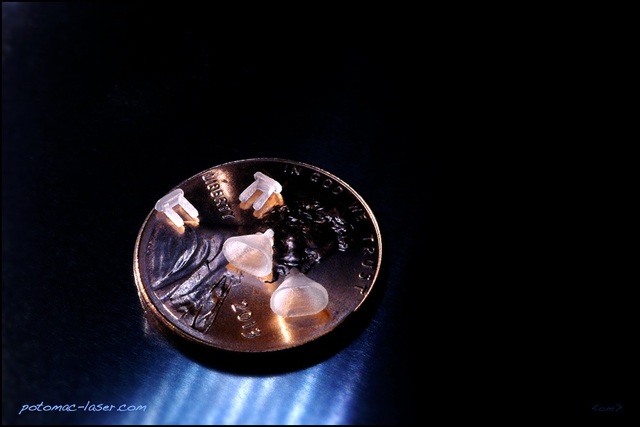Micro 3D Printing Middle Ear Prostheses To Bring Music to the Ears of Hearing Loss Sufferers
September 16, 2014 (PRLEAP.COM) Technology News
September 16, 2014 - 3D Printing is frequently in the news as a process for manufacturing prostheses to replace lost limbs. It's an obvious choice when additive manufacturing is combined with 3D scanning to custom fit a prosthesis to a patient's unique physical requirements.Potomac is finding more and more unique applications to micro 3D print small implantable prostheses. A recent project involved making the tiny elements of the middle ear to help develop prostheses for Otosclerosis disease.
According to the American Academy of Otolaryngology – Head and Neck Surgery (AAO-HNS), hearing is a dynamic, complex process. Vibrations from sound waves are transferred by the eardrum to three tiny bones in the middle ear. The stapes, commonly called the stirrup bone, sets the inner ear fluids in motion, starting the sensory process of hearing.
NIH's National Institute on Deafness and Other Communication Disorders explains that Otosclerosis is an abnormal hardening of body tissue. In the lifelong regeneration of new bone tissue, occasionally abnormal "remodeling" of bone occurs. If the abnormal bone remodeling is around the stapes bone it becomes fixed which inhibits its ability to generate the vibrations needed for proper hearing.
AAO-HNS estimates that a full 10% of the world's adult Caucasian population is affected by Otosclerosis, and NIH puts the number of US cases at over 3 million. There are no drug treatments, hearing aids only work in mild cases, and most people are diagnosed while in their 20's so it is a lifelong problem. Consequently, it is important to try to develop prosthetic solutions.
Monika Kwacz, a researcher at the Institute of Micromechanics and Photonics at Warsaw Technical University in Poland has been studying the results of stapedotomy surgery, leading to her team's development of new stapes prostheses. Monika came to Potomac she says because "Intuitively, it seemed to me that 3D Printing would be the best technology for first prototyping. We need the first prototypes to experimentally verify that the device geometry was well designed and we will be able to implant the device in a temporal bone. If the geometry is good, then we will check the mechanical operation of the device. However, if we find we do need to modify the device geometry, 3D Printing provides an easy way to modify in the CAD design step."
Monika had tried another 3D Printing process but it could not meet the precise requirements of the stapes design. Using a 3D Systems ProJet high-resolution 3D Printer, Potomac was able to get the very small, precise geometries she needed with tight tolerances. Turnaround, even shipping "across the pond" to Europe, was also quick.
Given the small size of the parts, short production runs may also be economically viable once the design is proven. In the meantime, Potomac will continue working with Monika to micro 3D print a solution that will literally bring music to the ears of many Otosclerosis suffers.
About Potomac Photonics
Potomac Photonics, Inc. provides micro digital fabrication contract services including 3D Printing, laser micromachining, micro CNC machining, and hot embossing for prototypes to production. The Baltimore-based company is an authorized re-seller of 3D printers from the 3D Systems Corporation and offers extended in-house service of the machines, as well as a new 3D printing section of their website offering information on this emerging technology. For more information visit http://www.potomac-laser.com
